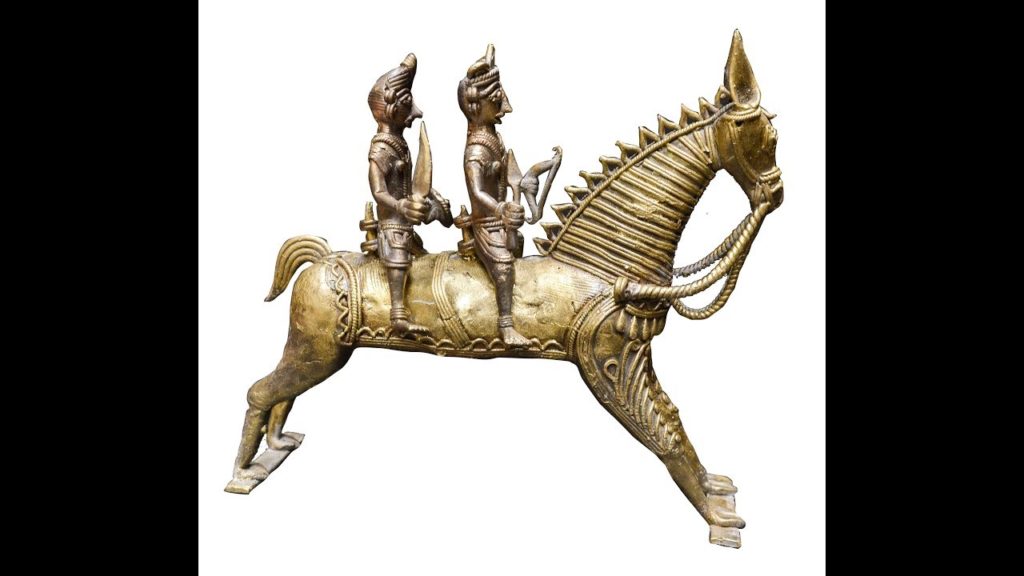Dokra or Dhokra is an ancient craft which uses lost-wax casting technique to create artefacts from non-ferrous metals like bronze and copper-based alloys. The ancient Mohenjo Daro figurine of the dancing girl art is one of the testimonials of this form of art which dates back to about 5000 years. One of the famous folklores of Chhattisgarh, the epicentre of the Dokra craft technique, says that about 3000 years ago, the king of Bastar gifted his queen a Dokra necklace. With time, the Dokra art had spread to the neighbouring states of Odisha and West Bengal from the epicentre.

Burdwan’s Dariyapur near Guskara is one such village where everyone is a Dokra craftsman. The village has around 133 craftsmen. Their finesse and precision with the Dokra designs have earned them the prestigious AIACA Craftmark.
How the Dokra Art work is done?
At first, a clay core roughly resembling the final cast image is made. The clay core is then layered with beeswax, nut oil and resin from Damara orientalis tree. The wax layer is then carved with intricate designs and finer details. Next, a layer of clay is smeared over the wax layer covering the gaps in between the intricate carvings. Thus, forming the final mould for the metal alloy which would be poured inside the artefact which is being made.
The object is then heated slowly over a hearth. The heat melts the wax. The finer gaps left by the melting of wax is then filled up by molten metal alloys. The molten metal gradually hardens between the core and the inner surface of the mould. The clay is then scraped off revealing the final shape of the artefact. Lastly, polishing of the created object is done before getting it displayed.
The entire process of Dokra Art is time consuming and might take a couple of months for a finished product to get ready.
The Artisans of Dariyapur
The Dokra process is not only time consuming but also pretty expensive because of the raw materials used while making them. The artisans of Dariyapur had been continuing this livelihood for generations inspite of the cost factor and the overall decline in the Dokra Art culture and consumer demands. They say that their ancestors had arrived from Odisha and gradually settled in this village over time. Their humble pursuit, tenacity and determination to continue with this age old craft have made them the upholders of a dying legacy and cultural heritage of Bengal as well as India. They display their craftworks during the annual fair organised by Dariyapur Dokra Artisans’ Cooperative Industrial Society Limited.

The Initiatives to save the heritage
The Government of West Bengal along with UNESCO have developed a Rural Craft Hub in Dariyapur and community museum where the artefacts are displayed. Educational tours to this village are also encouraged where the artisans held workshops teaching the nuances of this art form to the younger generations. An annual fair is also held to exhibit the breathtaking sculptures to the common people. Probably, this year it will be held in the month of November. One can contact in the address and phone number given below if he or she is interested of being a witness to the unique part of the heritage of Bengal.
Dariyapur Dokra Artisans’ Cooperative Industrial Society Limited
Village: Dariyapur, Burdwan
Pin: 713128
Phone No: 9735228086
Information Courtesy:
- http://banglanatak.com/
- https://ruralcrafthub.com/hubs/bardhaman-dariyapur/
- http://toureast.in/destination/dariyapur/
- https://en.wikipedia.org/wiki/Dhokra
- https://www.youtube.com/watch?v=Sz_0VK2jpQM
Also Read: The heritage art forms of Bengal, – Dashavatar Cards and Patachitra.

